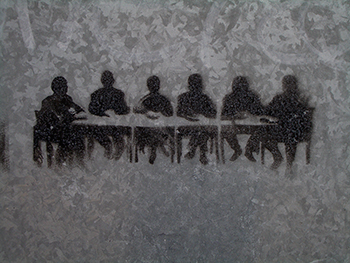Subscribe to the O’Reilly Radar Podcast to track the technologies and people that will shape our world in the years to come.
In this week’s episode of the Radar Podcast, O’Reilly’s Mary Treseler chats with Aaron Irizarry, director of user experience for Nasdaq product design, about Nasdaq’s journey to become a design-driven organization.
Irizarry also talks about the best ways to have solid conversations about the designs you’re working on, and why getting a seat at the proverbial table isn’t the endgame. He’ll be speaking about these topics and more at the O’Reilly Design Conference, January 19-22, 2016, in San Francisco.
Here are a few snippets from their conversation:
It’s really interesting to see an organization that didn’t have a product design team as of, what, 2011, I believe, see the need for that, bring someone in, hire them to establish a team, which is my boss Chris, and then see just the transition and the growth within the company, and how they embraced product design.
The more we delivered, the more we built equity within the company to be able to kind of have more of a say. … What has really helped us is that we didn’t just focus on getting a seat at the table. We focused on what to do when we have that seat, and how we keep that seat and bring others to the table as well.
What are you going to do when you get that seat at the table? Are you going to go talk to them and be like, “design, design, design”? Are we going to push our agendas, and what we think is best as designers, or do we even understand the nature of the game? Especially in an enterprise situation, this isn’t like Disneyland for designers. This is about trade-offs. This is about learning how to communicate and work with people. … Getting a seat at the table is one thing, but understanding what to do when you’re there, and how to work with people in a way that allows you to keep that seat at the table, is way more important.
I learned that design doesn’t matter as much, as far as doing what’s right in design, and what the community thinks is the best way to handle something. Do what’s best for the organization. Work with the people in a way that makes the product better. It makes them feel better about the work that’s being done, and you’re going to have much more longevity sitting at that table.
We all come from different backgrounds. We have different experience levels. We’ve gone to different schools, or worked at different companies. All that weighs into your experience, and the lens through which you approach design. You may say a certain term, and I may say that same term, but we understand it two different ways. The whole Princess Bride thing — that thing you said, I don’t think it means what you think it means — that’s really very common. It’s really good to make sure that we understand what the person is getting at. If you can really do those things, keep your cool, not get offended, you really have a good chance to have really solid conversations about the designs that you’re working on.
Image by Richard Rutter on Flickr, used under a Creative Commons license.

